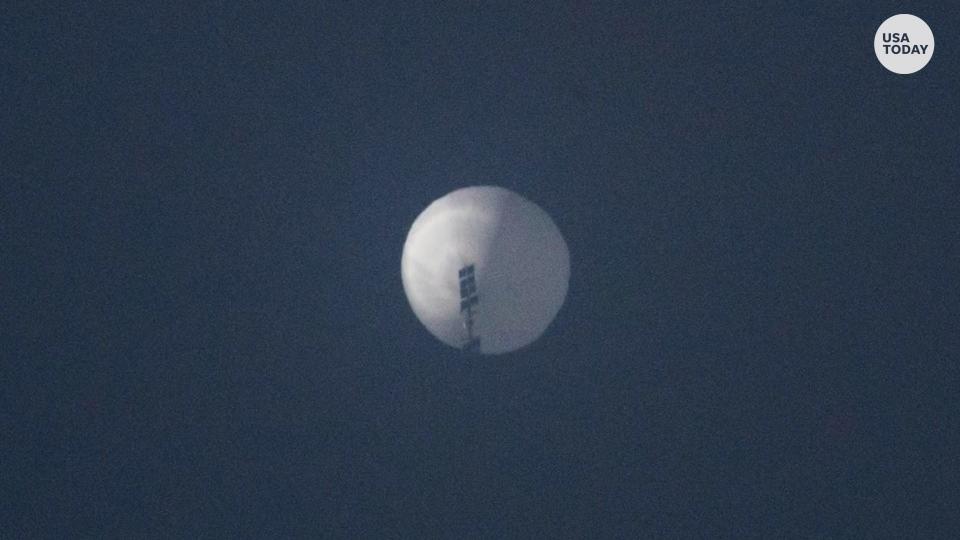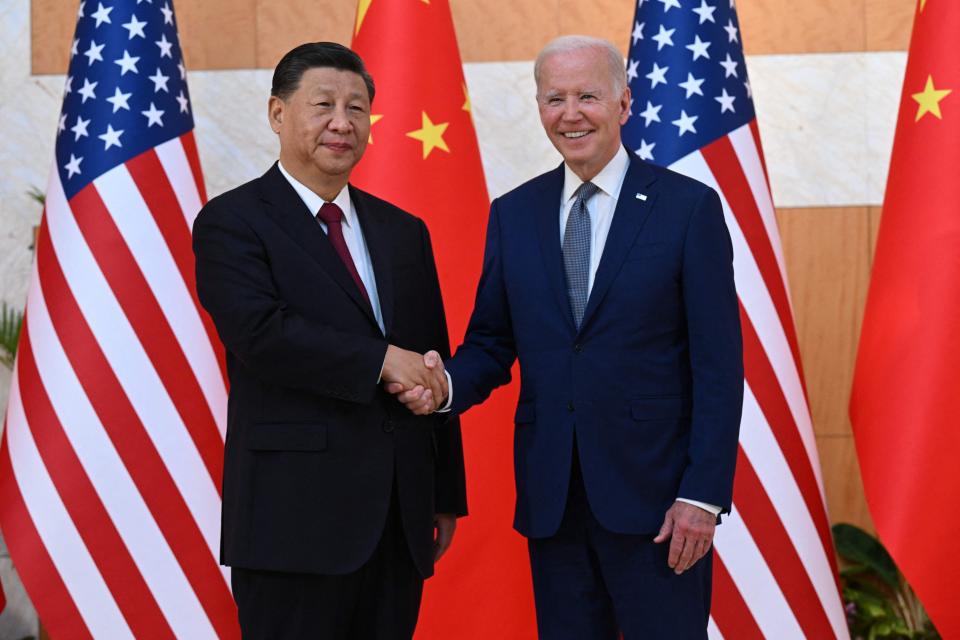Surveillance, research, civilian use? What the Chinese balloon is and how the U.S. can bring it down
It's a bird! It's a plane!
Actually, it's a Chinese spy balloon, Defense Department officials say.
After a Chinese surveillance balloon was spotted drifting over the northern United States, the U.S. government "acted immediately to protect against the collection of sensitive information," Air Force Brig. Gen. Pat Ryder, the Pentagon press secretary, told reporters.
U.S. officials considered shooting the balloon down when it was over Montana, but decided against it due to concerns that debris could injure American bystanders or destroy property.
China denied that the balloon is a spycraft, calling it a “civilian airship” meant for meteorological and other research that blew off course.
“We know that it’s a surveillance balloon,” Ryder said.
Here's what to know about spy balloons.

What are spy balloons?
Spy balloons are just that – balloons equipped for surveillance.
The balloons can be equipped with reconnaissance technology to "observe sights of interest and gather data," but can't be steered the same way a drone or airplane could be, according to Marina Miron, a defense researcher at King’s College London.
John Parachini, a senior international and defense researcher at the nonprofit RAND Corporation, said that since the balloon is traveling in “higher airspace” – above where commercial planes manned by civilians fly – the balloon likely has a communications system that guides it on its flight, adjusting based on wind speed and direction.
Without boarding the balloon, it would be difficult to verify China’s claim that it is a civilian vehicle, Parachini said. But even if the balloon is meant for non-military research, that doesn't mean it won’t provide information useful to China’s military, he said.
“For example, China may have been waiting to see when and how U,S. military forces responded to this intrusion of U.S. air space,” Parachini said.
When were they first used?
The first known usage of spy balloons occurred in 1794 by France during the Battle of Fleurus, according to the U.S. Centennial of Flight Commission.
The French military's so-called "balloon corps," or "Aérostiers," used the balloons to spy on Dutch and Austrian troops, according to the commission. Two people would float up in the balloon’s basket; one would observe the enemy, and the other would signal to the ground crew controlling the balloon.
The French won the battle, and several subsequently, thanks to the new techniques.

Has the U.S. used them before?
During the Civil War, the U.S. used hot air balloons to track Confederate troops’ movements, and in the 1950s the U.S. Air Force set in motion the first “large-scale, unmanned, high altitude balloon intelligence operation” – Project Genetrix, during which reconnaissance balloons photographed “Soviet land mass.”
In 2019, the U.S. launched the Covert Long-Dwell Stratospheric Architecture (COLD STAR) program, which included spy balloons used to track hypersonic missiles in light of increased risks of launch by Russia and China, Miron said.
“What is curious about this incident," Parachini said, "is that China has satellites that are 300 miles above the earth that can provide surveillance over much of the same territory this balloon has traveled."
Why would China use a spy balloon now?
Parachini said one possibility for the surveillance balloon could be because China wants to conduct surveillance of military sites and test whether the U.S. would notice such surveillance is taking place.
The balloon also could be sending a political message ahead of planned meetings U.S. Secretary of State Anthony Blinken had scheduled with Chinese officials in Beijing. Parachini said the surveillance balloon could be seen as “provocative action” to affect upcoming meetings.
Michon added that it may also serve as political signaling regarding the U.S. possibility of increasing its military presence in the Philippines.
“China wants to remind the U.S. that the U.S., too, has weak spots that China can exploit with impunity,” she said.
Has this happened before?
Similar balloons also thought to be of Chinese origin have flown near other military sites in Guam and Hawaii, and the balloon this week could be collecting information about U.S. nuclear missile silos, according to Bradley Bowman, senior director of the Center on Military and Political Power at the Foundation for Defense of Democracies, and Ryan Brobst, a research analyst there.
However, there is also a chance China is testing its ability to enter U.S. airspace and lost control of the balloon because of a strong winds or a malfunction, Parachini said. He hypothesized China could be doing civilian research and the weather caused the balloon to stray from its course.
“Scientific experiment mistakes do happen,” he said.
Can the U.S. just 'shoot it down'?
Since the spy balloon’s existence became known, lawmakers have called for the U.S. government to "shoot it down," and officials say they have weighed that option.
But taking the balloon down from the sky might be trickier than it seems, according to Bowman and Brobst.
"Our radars and missiles are generally designed for fast moving targets usually at lower altitudes that often emit heat," they said over email. "This is a slow moving target at high altitude that emits little to no heat."
Shooting the balloon down might prevent the U.S. from reverse-engineering technology that the balloon is carrying, too, Miron said. Some of the options, after having observed it, would be to try ensure that whatever technology is being used, is disabled and cannot fulfill its purpose.
If shot down, the balloon – which has been estimated to be the size of two buses – could leave a debris field twenty miles long and wide, Parachini said.
“Where the debris might land from that height is hard to predict,” he said. “A mistake could result in the debris falling on a populated area, damaging property and injuring people below.”
Dig deeper:
What we know: Chinese spy balloon spotted in American skies, Pentagon says; US weighed shooting it down
Blinken's China trip: Secretary of State postpones China trip amid spy balloon row
Live updates: FBI expected to search Pence locations; Chinese spy balloon in American airspace: live updates
Video: Chinese spy balloon spotted floating over US, officials not planning to shoot it down
US-China relations: Why Taiwan is the biggest flashpoint in the increasingly fraught US-China relationship
Contributing: Maureen Groppe, Tom Vanden Brook
This article originally appeared on USA TODAY: What we know about the Chinese spy balloon spotted over the U.S.
